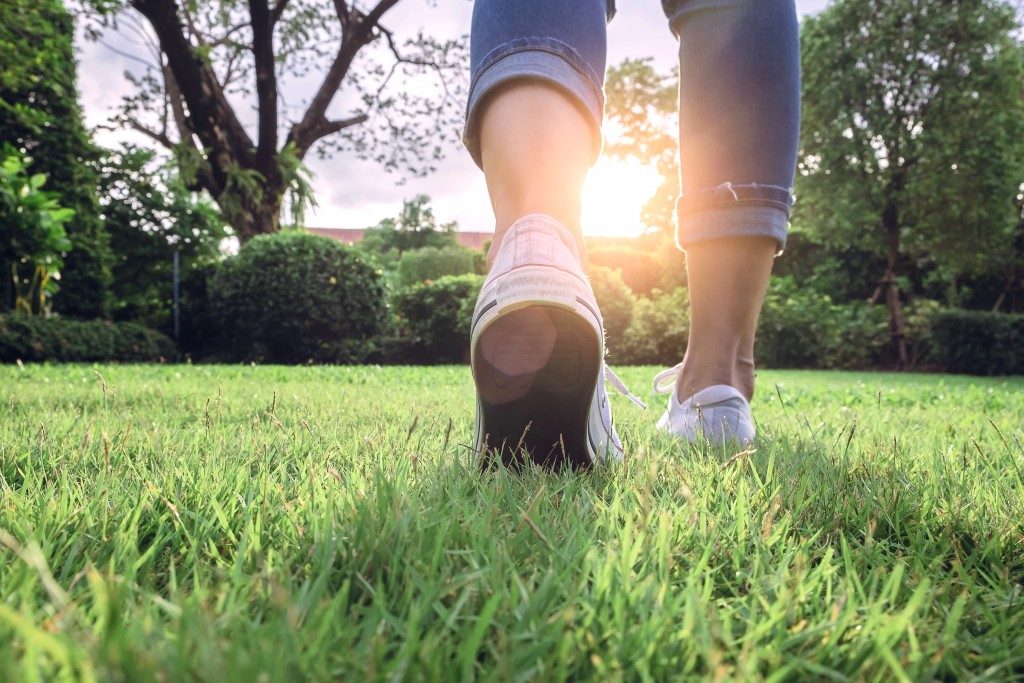Fitness has become an expensive industry. In the United States alone, it is estimated at $30 billion and it’s only expected to grow.
It’s not surprising: with expensive activewear, costly gym equipment, and gym memberships costing an average of $58 monthly, getting fit can burn through a lot of money fast.
But getting fit does not have to be expensive; in fact, it doesn’t have to cost anything at all.
Recently, bodyweight exercises have become more popular as more people are looking for ways to get fit without having to pay for expensive gym memberships or buy their own equipment.
So, for our female readers looking to get into shape, here’s everything you need to know about bodyweight exercise, why they work, and how you can create the best effective bodyweight workout plan at home.
What Are Bodyweight Exercises?
Bodyweight exercises use a person’s own body weight in the process of working out to strengthen their body. Instead of using dumbells or any equipment, the person uses their weight as their own resistance to gravity.
You might not know this, but if you’re already working out, then you might be doing a few bodyweight exercises. A few examples of bodyweight exercises are squats, sit-ups, pull-ups, and push-ups. When you do a push-up, for example, you use your muscles to push your weight against gravity. It’s an effective body workout without needing any other equipment.

Because all you really need is your own weight, bodyweight exercises can focus on various motor abilities. These can include:
- Strength (push-ups and pull-ups);
- Speed
- Flexibility
- Coordination
- Balance
Because the ease or difficulty depends mainly on your weight, bodyweight exercises are suitable for most people of all ages, sexes, and body types. For those on the heavier side, it may be more difficult, but bodyweight exercises are mainly a form of strength training exercises, so it may become more manageable over time. Also, if you have a physical condition, you may have to consult your healthcare practitioner on exercises you are not allowed to do.
Can I Do Bodyweight Exercises for Weight Loss?
When people think of weight loss, they may immediately think of cardio rather than strength training. But if you’re really determined to lose a significant amount of weight, strength training should be an option.
Cardio can get your heart pumping, but strength training builds muscle and you lose both muscle and fat in the process. As a result, you could unknowingly be slowing down your metabolism and losing lean muscle mass. On the other hand, strength training means more lean muscle (which burns through more calories even when at rest) and more effective fat burning practices.
When you perform regular strength and resistance training, whether through bodyweight exercises or other types of exercises, you allow your muscles to adapt by building itself. Over time, your fats turn into muscle mass. The more muscle you have, the higher your metabolism, and the more calories your body needs even at rest.
You might not see the effects of strength training on the weighing scale immediately, but don’t worry. Rather than shedding your pounds, your body is building muscle while you’re losing fat. Eventually, you will see weight loss results once your body requires more calories and naturally sheds the excess fats.
And while you can’t see the effects of your progress on a weighing scale, you can see and feel it in the way your clothes fit. Muscle is much more compact than fat, so even if you don’t appear to be losing weight, you’ll find that your clothes are noticeably looser.
For a guide, here’s a picture that can help you see the difference between the size of muscle and fat.
Through bodyweight exercises, you can build lean muscle while shedding excess fat.
Best Bodyweight Exercises for Women
Like any exercise or diet routine, it’s always best to consult with your doctor before starting in case you have a physical condition that would make it difficult or harmful to perform these exercises.
Also, it goes without saying: do not push your body beyond its limit. How many reps for bodyweight exercises depends on your body. Beginners may find three sets of 10 difficult, but as you get used to your workout routine, you can add more sets. Ideally, you should work out three or four times a week to get the results you want at a healthy pace while still giving your body time to recover.
Now, here are the bodyweight exercises women can use to target specific areas of their body. Be sure to warm up and stretch before working out and cool down after. Take note that while some of these exercises may focus on a specific part, it could also be working on the rest of your body. While recovering, it’s normal to feel body pain in other areas you did not target.
Bodyweight Shoulders and Arms Exercises
These routines target the muscles from your shoulder joints to your fingers. If you are recovering from an arm injury, avoid targeting this area without your doctor’s approval. Here are two examples of exercises.
Extended Arm Movement
An easy warm-up before any routine that uses the weight of your arms as resistance. Stand with your feet hip-width apart and extend your arms in front of you. Keep it at shoulder level, palms facing downwards. For 30 seconds each, perform the following movements:
- Move your arms in small circles in one direction. Then switch directions and repeat for another 30 seconds.
- Pulse your arms up and down.
- Turn your palms to face forward and push and pull. Turn your palms to face backward and repeat for 30 seconds.
- Repeat these five movements three times.
Planking

Beginners may be unable to plank properly, so skip this if you find it too difficult. Here’s an instructional video on how to plank properly.
When done right, planking builds your strength and endurance. Keep your legs extended and your body in one straight line. Maintain your position for 60 seconds each, rest for up to a minute, and repeat two or three times.
Bodyweight Chest Exercises
Push-Ups
Here is another guide on how to properly do a push-up. Unless you’re doing knee push-ups, you should not be putting your weight on your knees.
Try to do three sets of 10. But if you’re a beginner, you can start much lower and build up from there.
Up-Down Dog
From the downward-facing dog, lower your body down to a plank position. Drop your hips and lift your chest in an upward-facing dog. Lower yourself back down and return to the downward-facing dog. Perform three sets of 10.
Bodyweight Core Exercises
Leg Raises
Start leg raises with one leg at a time before exercising with both legs at once. When raising your legs, you should be using your core muscles (not your legs) to lift. If you don’t feel the stretch and pull on your tummy, you may be doing it wrong. Perform three sets of 10 per leg and with both legs.
Mountain Climbers
Aside from your core, you’ll also be working on your chest, arms, and abdomen. Remember to keep your body straight while doing three sets of 10 for each leg (count the number of times you bring your knee up).
Bodyweight Back Exercises
Locust
A form of yoga pose, the locust trains your back muscles. Repeat three sets for 30 seconds each.
Bridge Rolls
The instructional video offers three variations of the bridge exercise – choose whichever works best for you. Make sure your feet and upper back are flat on the ground. Lift and lower your back slowly. Do three sets of 10, counting for every lift.
Bodyweight Leg Exercises
Calf Raises
Some people prefer to perform this workout with dumbells for added weight and to help their balance. If you do not have one, you can do it without. Lift and lower your feet slowly and do three sets of 25 lifts.
Jumping Jacks
Make sure your arms extend overhead. To avoid injuring your feet from the impact, make sure you are wearing proper footwear and keep your feet slightly pointed to minimize the impact of your jumps.
Cool Down
These are not the only exercises available, and you can do further research to find more exercises to target specific areas in your body. Always remember to stretch before and after every workout to avoid tensing up your muscles and build up your flexibility and motion.
After every workout, give your body at least 24 hours to recover. You may experience body and muscle pain, and this is normal. Relieve your pain through over-the-counter painkillers, hot compresses, or through any natural remedy.
Aside from the fact that you won’t be spending on gym memberships and equipment, bodyweight exercises can provide you with challenging strength and resistance training routines. So, whether you’re doing it for weight loss, build-up muscle, or even just to stay fit in the comfort of your own home, bodyweight exercises are a must in any fitness routine.




